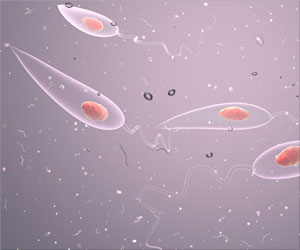Leishmaniasis - a globally occurring neglected tropical disease spread by sand flies are mainly acquired from the skin rather than a person's blood.

‘Leishmaniasis - a globally occurring neglected tropical disease spread by sand flies - are mainly acquired from the skin rather than a person's blood.’





However, the number of parasites found in blood has often been puzzlingly low, leading some to question whether there is another source of parasites for transmission. Scientists at the University of York have discovered that parasites responsible for leishmaniasis - a globally occurring neglected tropical disease spread by sand flies - are mainly acquired from the skin rather than a person's blood.
Now, mathematicians, experimental biologists and immunologists have revealed a 'patchy landscape of parasites' found on carriers' skin that determines how many parasites are picked up by sand flies.
Using mathematical modelling, they showed that some areas of skin can contain particularly high numbers of the parasite, while other areas may not. This means that whether a sand fly becomes infected or not depends on where they bite a person.
This breakthrough is significant as it suggests current methods of treating leishmaniasis are too simple, as disease detection and treatment often focuses on levels of the parasite in blood samples.
Advertisement
Johannes Doehl, Post-Doctoral Research Associate in York's Centre for Immunology and Infection and lead author of the study, said: "Currently, to assess treatment success in visceral leishmaniasis, clinicians focus on monitoring parasite levels in a host's blood.
Advertisement
Dr Jon Pitchford, Reader in York's Departments of Biology and Mathematics, said: "To effectively control leishmaniasis, we don't just need to cure the disease in patients, we must also understand and try and break the transmission cycle. This research is the first step towards improving the treatment process and demonstrates how the application of mathematics can help solve important problems in medicine."
Source-Eurekalert










